Lacework in Iron: Balusters and Railings of Kolkata - GetBengal story
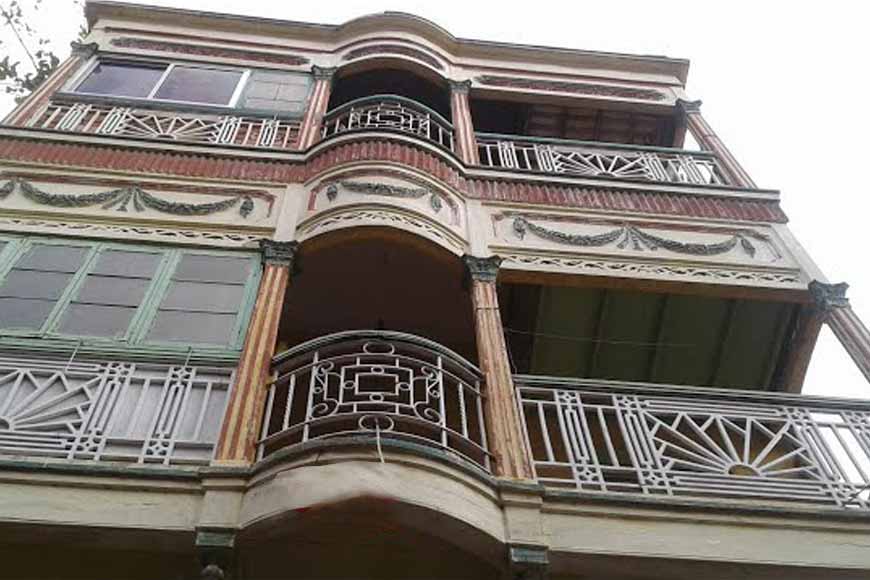
The railings of Kolkata buildings were made from cast iron
Minute intricacies in the City of Joy are hidden in every corner. When walking past the heritage houses of North Kolkata, the minute details of the houses serve as a beautiful sight – especially the railings or the balustrade of the houses.
Jawhar Sircar, Member of Parliament, Rajya Sabha, on 27th September, gave a lecture on such balusters of the houses of North Kolkata. He started the lecture by saying that compared to South Kolkata, North Kolkata holds a lot more such aesthetic pieces which are mesmerizing and priceless. It is not that South Kolkata is totally devoid of them but it is nothing in front of the historic worth of North Kolkata. As he put in “Many such things are getting lost but North Kolkata still holds these age-old treasures as much as possible. Many heritage houses are being broken down and made into multi-storeyed buildings. Yet, there are still some left, which reflect the essence of old Kolkata,” he said.
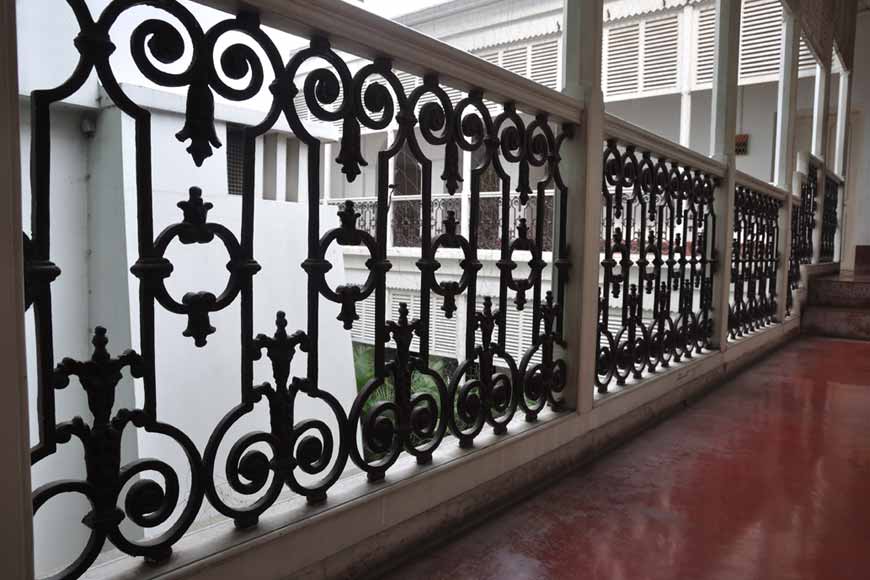
The railings of Kolkata homes since the British era and pre-British era were made from cast iron that gained prominence in Europe in the 18th century. It reached India at stage 3 during the 1840s or 50s. Cast iron has a higher carbon content, from 2% to 4%. Cast iron is the product of melting iron ore in a blast furnace. “In Manhattan, while walking on Canal Street, I noticed the railings, the cast iron architecture is a tourist attraction there. Corinthian style of architecture had been used to make them; the artistry is mesmerizing. To adapt to the temperature there, they put together works of cast iron and glass so that the rays of the sun can fully enter the building,” added Sircar.
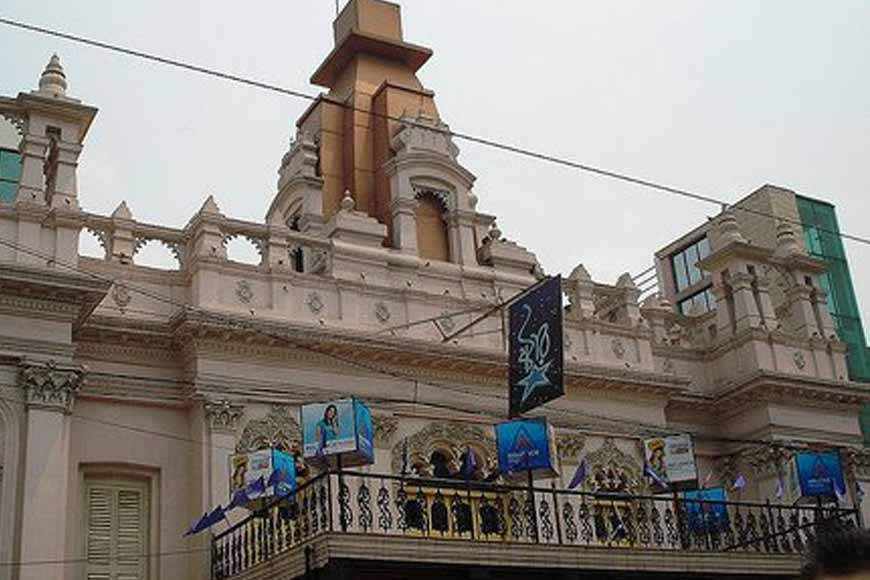
During the 1860s or 70s, many such European cast iron works were being imported. Grecian urn had become a big deal in Europe and the elites of Kolkata had also joined the trend. Beside the urn are olive leaves often used as a crown of laurels. In Kolkata, this became a trend that became visible in the ironworks. While entering the Star Theatre, we often ignore the beautiful ironworks, it also has multi-foliated arches. Till the end of the 19th century, there have been most European styles of ironworks or railings. A combination of European and traditional design started after that. In European architecture, huge pillars were considered to be majestic. There are many houses that are still found in Kolkata in which a pillar continues from the ground floor to the second or third floor. The middle classes started using these designs but they felt the need to change it a little to protect the house from the sun and rain. The upper part was covered with “Jhilmili”, which provided protection from the sun rays and rain and at the same time, kept the structure intact. They tried to coordinate the upper part with the lower part.
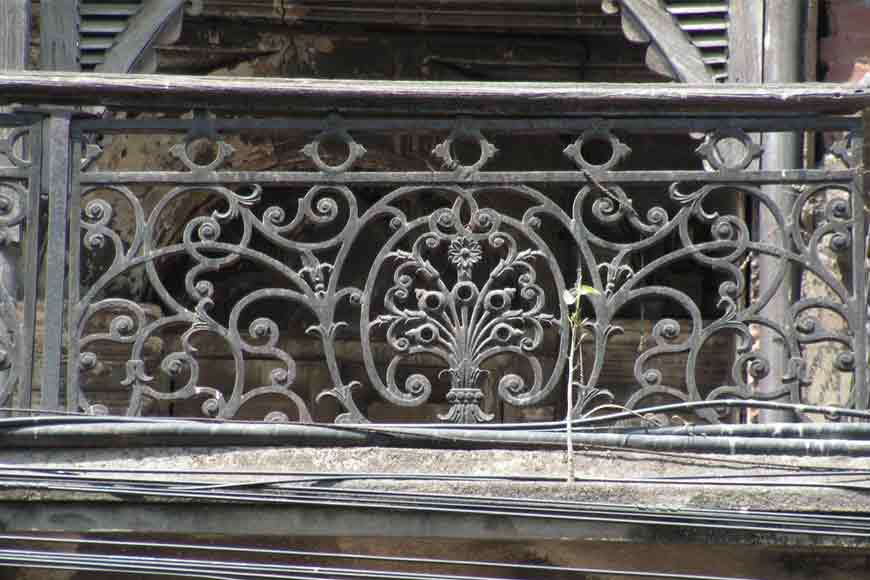
The casting was done on wood carvings. The actual art is not of the ironworks but of the wood carvings into which molten iron is poured and solidified into masterpieces. There is a stark difference between the works of cast iron and wrought iron which can be understood when balustrades with workings of both cast iron and wrought iron simultaneously, can be viewed. The wrought iron work lacks finesse and can never come close to cast iron. For security, many are using cast iron and wrought iron together. There are many houses with a small standing balcony that protrudes from it, which also looks very elegant. The old currency building has beautiful lacework in iron, it was on the verge of being destroyed but one of my colleagues raised her voice against its demolition. Spiral stairs of iron were also very famous.
The book “Ornamental Cast Iron in Architecture” by Sydney Lace, explains the architecture of such cast iron structures. There are many who work on many things in Kolkata but it will be really interesting if someone works with such balustrades which can be found around Kolkata. The beauty of these things needs to be documented properly. The details of these works, the meaning that they hold, what they symbolise, when were these made and all sorts of in-depth knowledge can help in spreading awareness and will encourage the revival of such beautiful works.”
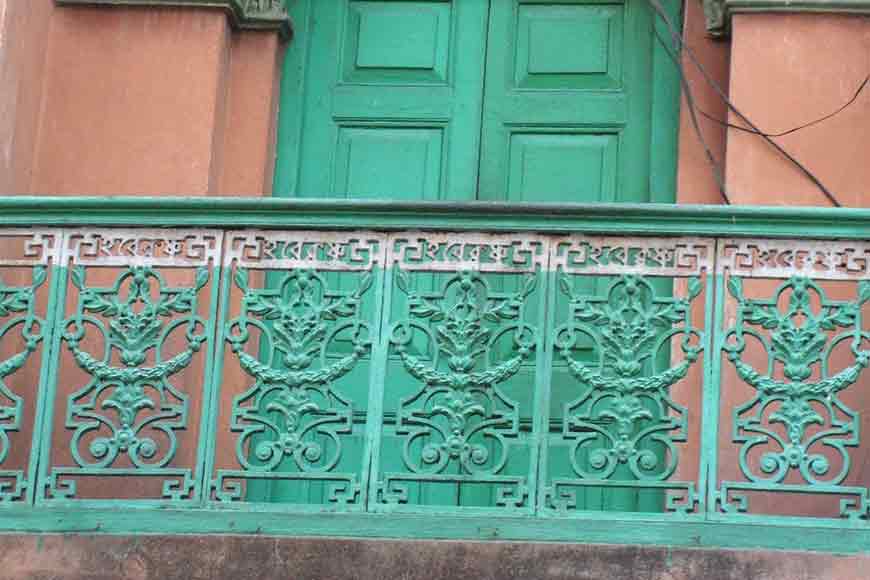
Vibha Mitra of Own the Past, said, “Ubiquitous in older homes especially in North Calcutta, one finds it hard to believe that these lacy meshes are in iron. Crochet and tatting make swathes of laces and these iron grills seduce us into imagining they are the same. Made from plaster casts, later the ‘Bataali’ woodworkers carved on wood cast in iron. In Calcutta, the older buildings are replete with these, though they change their character in terms of design elements. Modern living has made these in-between spaces redundant, with lives closeted in airconditioned rooms with television and internet. Gone are these exotic balustrades maybe due to economic considerations. These are exquisite handcrafted, and unique and today these craftsmen are hard to find due to a lack of opportunity. Let’s bridge this gap to reintroduce beauty, to resurrect the skill of human beings. Hand-made and sustainable. Let’s bring back old times.”











